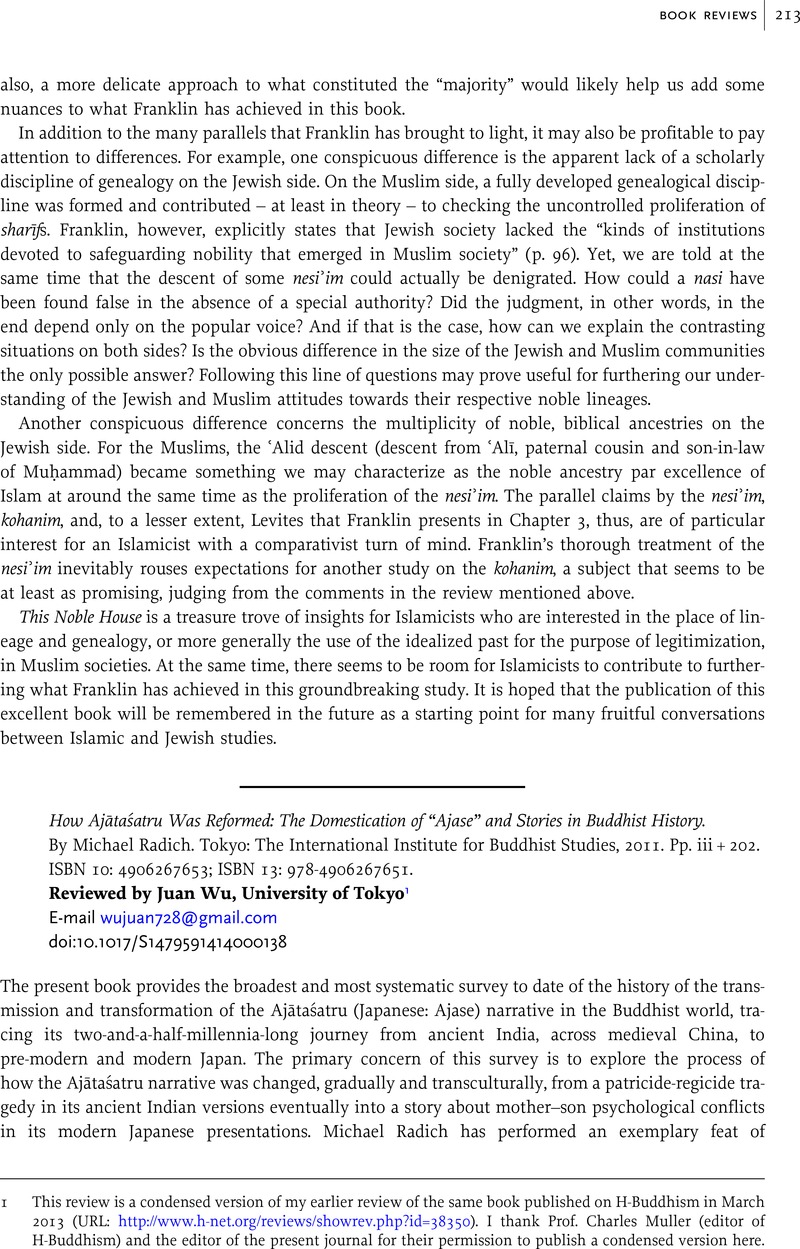No CrossRef data available.
Article contents
How Ajātaśatru Was Reformed: The Domestication of “Ajase” and Stories in Buddhist History. By Michael Radich. Tokyo: The International Institute for Buddhist Studies, 2011. Pp. iii + 202. ISBN 10: 4906267653; ISBN 13: 978-4906267651.
Published online by Cambridge University Press: 08 July 2014
Abstract

- Type
- Book Reviews
- Information
- Copyright
- Copyright © Cambridge University Press 2014
References
2 In his book Radich uses “MPNS” to refer specifically to T. 374, namely, *Dharmakṣema's Chinese version of the Mahāyāna Mahāparinirvāṇa-sūtra, a convention this review will follow as well. The abbreviation T refers to the Taishō shinshū daizōkyō, 100 vols., eds. Takakusu Junjirō and Watanabe Kaikyoku (Tokyo: Taishō issaikyō kankōkai, 1924–1935).
3 The five ānantarya crimes are matricide, patricide, killing an arhat, drawing the blood of a buddha, and causing a schism in the Buddhist community. For a detailed study, see Silk, Jonathan, “Good and Evil in Indian Buddhism: The Five Sins of Immediate Retribution,” Journal of Indian Philosophy 35 (2007), pp. 253–86CrossRefGoogle Scholar.
4 Granoff, Phyllis, “After Sinning: Some Thoughts on Remorse, Responsibility, and the Remedies for Sin in Indian Religious Tradition.” In Sins and Sinners: Perspectives from Asian Religions, eds. Granoff, Phyllis and Shinohara, Koichi (Leiden: Brill, 2012), pp. 175–215.Google Scholar
5 Ibid., 205.
6 See von Böhtlingk, Otto, Sanskrit-Wörterbuch in kürzerer Fassung, 7 vols. (Reprint: Delhi: Motilal Banarsidass Publisher, 1991)Google Scholar, ii.88b, s.v. “kūṇ,” “kūṇita,” and “kūṇi”.
7 See, for instance, Deleu, Jozef, “Nirayāvaliyāsuyakkhandha: Uvanga's 8–12 van de jaina Canon,” Orientalia Gandensia 4 (1969)Google Scholar, pp. 103, §12 [text]–104, §12 [paraphrase].




